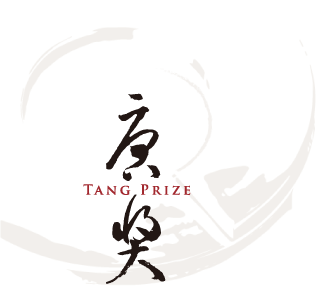 |
|
Tang Prize Newsletter |
Issue 8, DECEMBER 2016 |
|
|
Headlines
|
|
|
|
News Briefs
|
Stories of Success: the 2016 Tang Prize Laureates
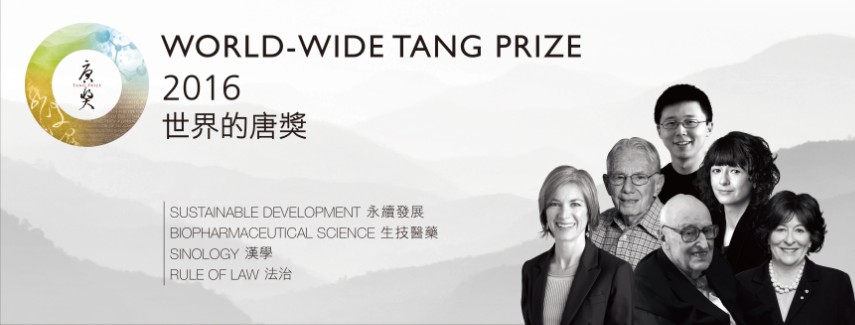
A series of in-depth documentaries describing the life and work of each laureate aired in November in Taiwan and are now on YouTube for instant viewing.
How did these individuals succeed? What factors were crucial to their success? What is their past? How do they view the future? Watch the 2016 Tang Prize Laureate Documentaries for the answers to these questions.
Watch the 2016 Tang Prize Laureate documentaries (English versions forthcoming)
|
|
A Special Night at the National Palace Museum
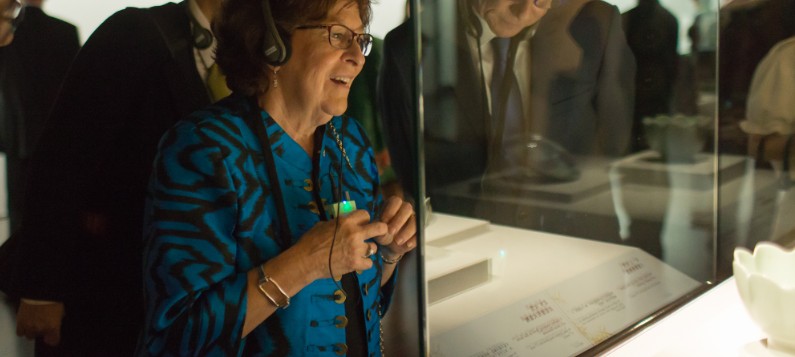 
Within the auspicious confines of the National Palace Museum of Taiwan, the second biennial Tang Prize and its six laureates were presented to the world this September 22. The night was a beginning for the Tang Prize as well as the opening ceremony for the special sustainability-inspired exhibit, “Viewing Nature in Chinese Art: A Special Exhibit of Select Artifacts,” which will run through December 22. Visitors were given a guided tour of the exhibition later that night through the five themed areas, "Inspiration from Nature," "Descriptions of Actual Scenes," "On the Subject of Seasons," "The World of Imagination," and "Humanity and Nature."
The exhibit is a look at sustainable development through a historical lens, specifically in the presentation of natural scenes in Chinese art and artefacts. Included in the collection was a rare Song dynasty Ru ware warming bowl and the paintings Three Friends of Winter, Viewing a Waterfall, Fishing in Seclusion by a Willow Bank, and Ox Lowing on a Willow Bank.
More information on the Reception and Viewing Nature in Chinese Art exhibit
|
|
Culture and Innovation Lauded at Award Ceremony
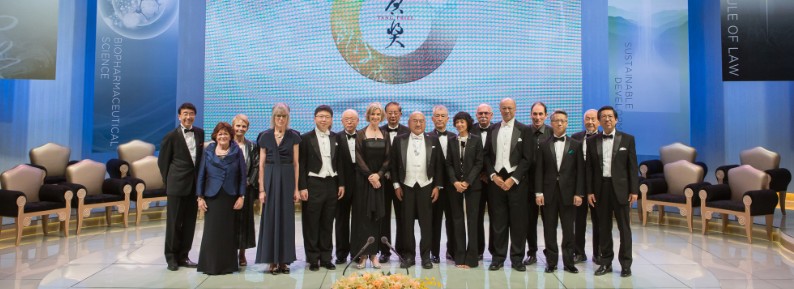 
“Knowledge begins with education,” in the words of the Tang Prize Founder Samuel Yin. The Tang Prize, awarded in Taipei on September 25, awards the people who have had the greatest impact in fields deemed most relevant to humanity in the 21st century.
Over 1,500 attendees witnessed the awarding of the newest laureates at the iconic Sun Yat-Sen Memorial Hall in Taipei, including some past Tang and Nobel recipients. Among the honored guests on stage were 1986 Nobel laureate in Chemistry Yuan-Tseh Lee, 2001 Nobel laureate in Chemistry Ryōji Noyori, and two of the inaugural Tang Prize laureates, Tasuku Honjo and Albie Sachs.
More information on the Ceremony
|
|
Poetry and Haute Cuisine Show Another Side of Innovation
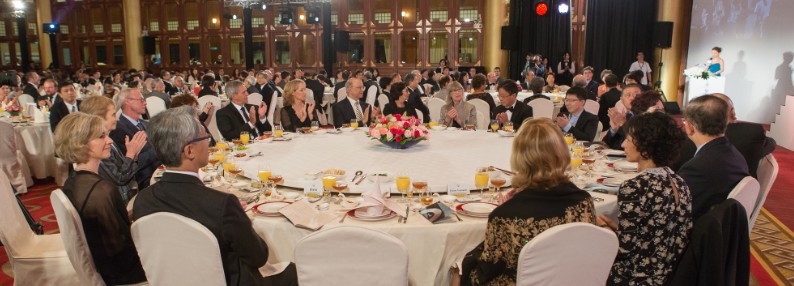 
After the award ceremony earlier on September 25, the laureates and guests were greeted with food and poetry at the banquet, held at the Grand Hotel Taipei. The overall theme of the banquet was “to reach high and look up to the moon;” a hint at the drive behind great discoveries.
Dishes were named and inspired after the lines from several everlasting poems written by renowned Tang Dynasty poets such as Li Bai and Wang Zhihuan. Besides their poetic inspiration, dishes at the banquet were a fresh interpretation of Taiwan, since all are made with local, in-season ingredients.
More information on the Banquet
|
|
Celebrating Accomplishments in Grand Style
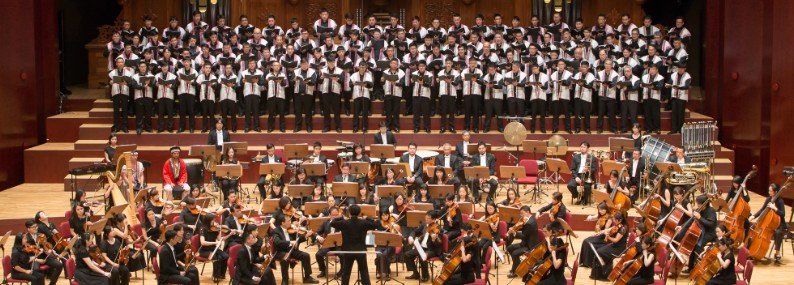 
After the elegance of poetry and cuisine, the next cultural event was the Tang Prize Concert held on September 26, which incorporated the dual themes of "tradition" and "innovation."
Solo pianists Rolf-Peter Wille and Chun-Chieh Yen performed a new take on tradition in Poulenc's Concerto for Two Pianos and Orchestra in D Minor. Then, a song of congratulations to the laureates of this year's prize: a medley of songs from composer Lee Che-yi, each piece of the medley having a particular significance to one of the laureates. Then, capping off the night, the Taipei Philharmonic Chorus Taiwanese, 100-men strong, performed composer Ma Shui-long's The Invisible Temple, which uses elements of the folk songs of the Tsou and Bunun tribes, two the aboriginal tribes of Taiwan.
More information about the 2016 Tang Prize Concert
|
|
Lecture Series Ignites Discussion on New Ideas
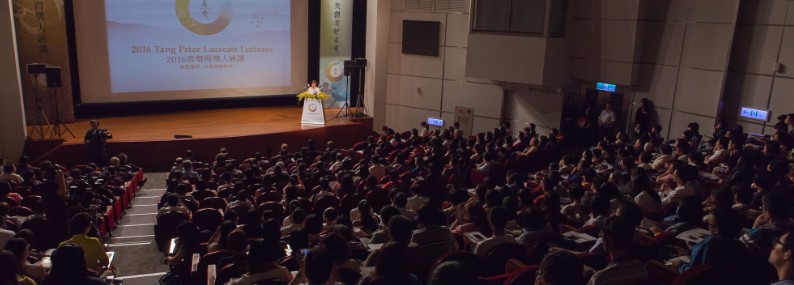 
This September 24 the newest recipients of the Tang Prize gathered in Taipei for the laureate lecture series at Taipei's Howard Civil Service International House.
Ashok Gadgil, who is himself an expert in water and energy, delivered a speech on behalf of the Tang Prize Laureate Arthur Rosenfeld entitled “Key Lessons from Dr. Art Rosenfeld: how to solve hard real-world problems and make a sustainable world.”
Rachel Chung, a mentee to the laureate William Theodore de Bary, delivered the next lecture. In her lecture, titled “Sinology of Wm. Theodore de Bary: a Bridge-Builder Who Became Himself the Bridge,” she spoke on the importance of de Bary as a main proponent of Neo-Confucianism, and one of the scholars responsible for its resurgence in the West.
The three joint laureates in the Biopharmaceutical Science field, Emmanuelle Charpentier, Jennifer Doudna, and Feng Zhang, spoke to a packed audience about their prize-winning work on CRISPR/Cas9, a system derived from the defense mechanisms of bacteria that is now being used to edit DNA.
The last talk of the day was given by the laureate in Rule of Law, Louise Arbour, on “Future paths for the promotion of the Rule of Law.” Rule of law, as described in Arbour's talk, is not a system run solely by the letter of the law. The content of the laws is also of great importance.
More information on the 2016 Laureate Lecture series
Browse the 2016 Laureate Lecture videos
|
|
Laureates, Experts, and Students Discuss Future in Forum Series
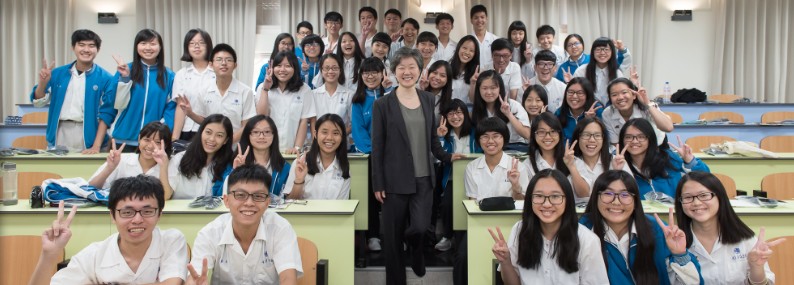 
In addition to the lecture series, the laureates were also able to get closer to the students and teachers of Taiwan in the forum and high school talk series.
On September 26, Rachel Chung, the representative of William Theodore de Bary (the laureate in Sinology) spoke to students and fellow sinologists at National Central University in Taiwan. The topic of the day was the importance of conversation in this modern, globalizing world. After finishing the forum, Chung met with students from Fudan High School (pictured) and gave them a bit of scholarly inspiration with a few stories about Confucius and her own mentor, William Theodore de Bary.
Later that day, laureate in Biopharmaceutical Science Jennifer Doudna discussed the gene-editing platform CRISPR/Cas9 with students and experts at Taipei Medical University. Noting the immense potential of the system, she called for scholars and the government to get “hands-on” with ethical discussion and educating the public about these powerful new technologies.
On the final day of the forum series, Louise Arbour spoke on the various aspects of the rule of law which face the world community in the modern world, topics such as drug policy, migration, and human rights. Despite some bad weather from Typhoon Megi, which had just landed that day, students were eager to attend and hear her insights and experience from working as a justice and in the UN.
Browse this year's forum videos here: 2016 Tang Prize Forum videos
|
|
Laureate and Diploma Exhibition: Bringing the Award to Northern, Southern Taiwan
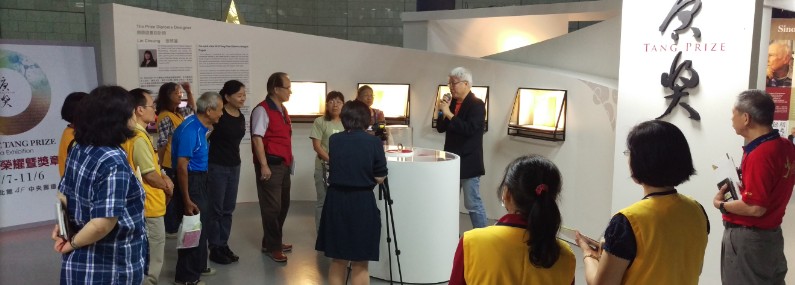 
The Laureate and Diploma Exhibition, which was held in both Taipei and Kaohsiung, allowed the general public to better understand the accomplishments of the laureates, from the complexities of gene-editing to the depths of research on Confucius.
Especially for the exhibition, the Tang Prize Foundation presented some items which had been donated by the laureates; items that in some way spoke about their work and life. These included a plaque awarded to Arthur Rosenfeld by then-California Governor Arnold Schwarzenegger; 3D molecule models from the lab of Feng Zhang; a book on the female scientist Dorothy Hodgkin, which inspired the work of Jennifer Doudna; letters from William Theodore de Bary's first trip to China, where he eventually had to leave after the takeover of Beijing; and a coat of arms depicting the important nodes in the life of jurist Louise Arbour, including her time as chief prosecutor of the international criminal tribunals of (former) Yugoslavia and Rwanda.
|
|
|
|
|
| |
 |
| Issue 8, DECEMBER 2016 |
| |
|
